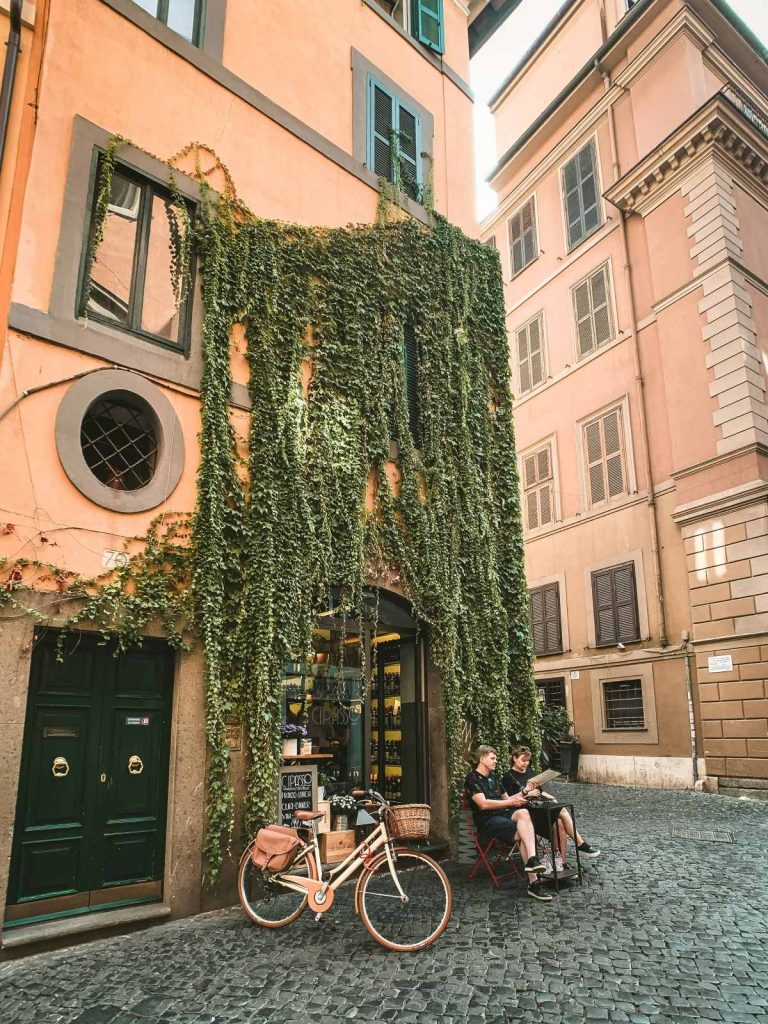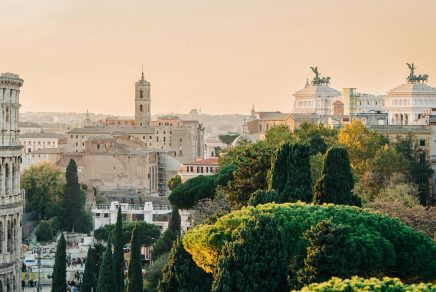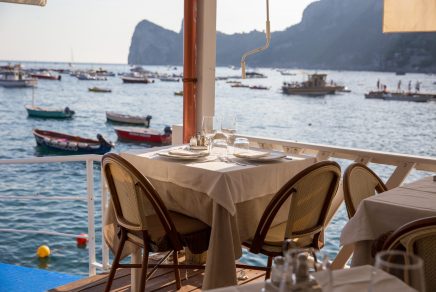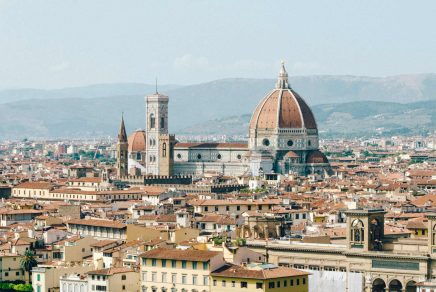Share the article
The idea of cycling in Rome may seem daunting. After all, the Eternal City is famous for its cobblestone streets, wild traffic, and cars parked in arrangements that look like they were dropped from the sky. But what better way to explore than by embracing a style of travel as old as the city itself? Today’s Roman commuters may rely on cars and scooters, but this journey goes back to Rome’s early roots—with a bicycle as the modern-day chariot.
Back in the day, Roman travel often involved muscle and rhythm, as galley crews rowed to the beat of a drum. Thankfully, the mode of transport has evolved. This time, a rented bike (and a helmet) will take on the twists, turns, and cobbles of Rome. Veni, vidi, bici. I came, I saw, I biked.
The trip begins at Bici & Baci, a popular rental shop on Via del Viminale. The options for exploration are endless, but today, the destination is Via Appia Antica. Once the bustling thoroughfare for emperors, merchants, and sometimes barbarian invaders, this ancient road once connected the city to the far reaches of the empire. The appeal of visiting Via Appia lies in its history—there was a time when crossing into Rome required swords and shields rather than a ticket for pizza and gelato.
But before setting out on the road, a pit stop for espresso is in order. One of the best spots in Rome, the café at the Capitoline Museums, serves an espresso that’s both rich and scenic, with sweeping views of the city. Navigating there by bike along Via Nazionale, however, quickly reveals a new challenge: thanks to the cobblestones, it feels more like riding a washing machine than a bike. Every bump, jolt, and shake is a reminder of the city’s ancient design.

On the way, the route winds through the iconic Piazza Venezia, the same roundabout that Gregory Peck and Audrey Hepburn famously navigated by Vespa in Roman Holiday. Their ride looked playful, even charming, but they also had a director on standby to yell, “Cut!” In real life, facing that whirlpool of cars, scooters, tour buses, taxis, and even horse-drawn carriages is like stepping into a live-action chariot race. Given the choice, one might even prefer a Colosseum showdown armed with a pool noodle.
Yet, Roman drivers are surprisingly unphased by an adventurous cyclist weaving through traffic. In fact, they seem ready for anything—even a cyclist rattling and bouncing with a look of panic that might resemble that of a stretcher-bearer scrambling to dodge incoming chariots. But finally, the journey reaches the café, where an espresso proves just as invigorating as it is delicious.
Recharged, it’s time to hit the Via Appia Antica. Getting there, however, introduces another challenge: navigation. Without a natural sense of direction, even Hannibal might have struggled to find his way here. But at last, the road to the ancient path appears, narrow and lined with tall stone walls. It feels like entering a portal to the past, with no way out but forward. There are no remnants of cyclists who didn’t make it, but it’s easy to imagine Rome’s street sweepers have cleaned up such evidence.
Riding close to the wall, the journey finally reaches the historic path. Past the Catacombs of Saint Sebastian and the Basilica di San Nicola in Carcere, Via Appia Antica stretches toward the open countryside. Here, the landscape shifts; there are fewer cars and more bikes, pedestrians, and the occasional goat. The road is dotted with ancient tombs, many engraved with inscriptions in Latin—a reminder of those who traveled this route centuries ago. Though the language is long forgotten, it’s easy to imagine at least a few of these ancient stones bearing sentiments like, “In hindsight, I wish I hadn’t rented that damn bike.”
At the end of the day, the ancient road offers a vivid reminder of Rome’s resilience and charm. Every bump and twist on this journey reaffirms one truth: Gerunt in casside—“Wear your helmet.”






